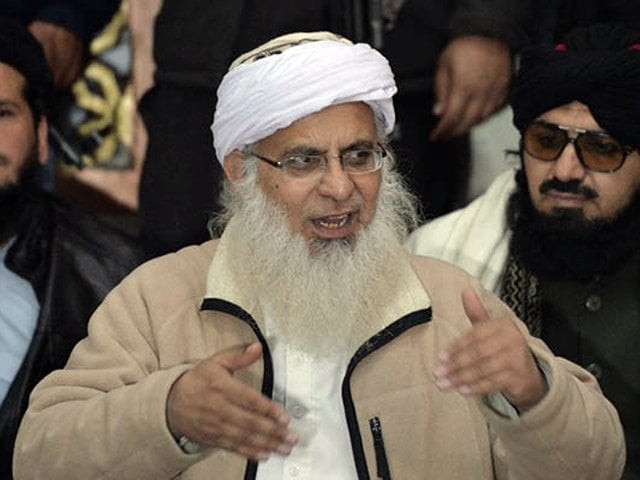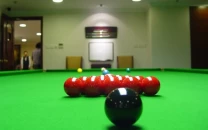Islamabad administration strikes deal with Lal Masjid cleric
Maulana Abdul Aziz had occupied the mosque and laid out his demands on Feb 7

Maulana Abdul Aziz had occupied the mosque and laid out his demands on Feb 7. PHOTO: AFP/FILE
On February 7, the cleric had occupied the mosque and laid out his demands. Authorities in the federal had laid siege to the mosque and started negotiating with him.
Islamabad Deputy Commissioner Hamza Shafqaat confirmed that an agreement had been reached with Aziz and said its details would be announced soon.
The firebrand cleric told BBC Urdu that he had reached a verbal agreement with the authorities and a written pact would be prepared within three days.
“The Islamabad administration would not object to my stay in Lal Masjid and we will be handed over Rs35 million that we spent on Jamia Hafsa,” he said.
“Otherwise, the issue of the Jamia Hafsa building being constructed in Sector H-11 of Islamabad will remain controversial,” he added.
The issue of a disputed 20-kanal plot allotted to Jamia Hafsa in Islamabad is pending in the Supreme Court.
Aziz’s demands included the reconstruction of the old building of Jamia Hafsa adjacent to Lal Masjid. It was demolished because it was illegally constructed on government property.
According to police, they have been deployed around the mosque for three days. They added that the cleric was using around 100 female students accompanied by six or seven men as his shield to prevent the law enforcement agencies from removing him from the mosque.
Around 3,000 female students are present at the seminary in Sector H-11 in the federal capital.
Maulana Aziz returns to Lal Majid’s pulpit after 2014 civil society face-off
During his time at the helm of the Lal Masjid, Aziz shot to prominence for his inflammatory sermons, advocating jihad against the West and a hardline interpretation of Islam.
By 2007 things had reached a tipping point. His armed followers had begun taking his message to the streets of the capital, vandalising CD and DVD stalls and kidnapping Chinese masseuses, with tensions quickly degenerating into murderous clashes.
When the regime of then-President Gen Pervez Musharraf launched an assault on the mosque on July 10, 2007, the army found itself facing heavily armed militants. The controversial operation was followed minute-by-minute on live television, with more than 100 people killed in the week-long effort to pacify the mosque and arrest its leaders.
The attack on the religious site sparked ferocious blowback from extremists across the country, marking the emergence of the Pakistani Taliban (TTP) – an umbrella organisation for militant groups targeting the Pakistani state.
In the following years, violence increased dramatically, with thousands of Pakistanis killed, maimed, or forced to flee their homes as security deteriorated. Aziz himself was arrested as he tried to flee the besieged mosque in a burqa, taken straight to a television studio and paraded in the garment – earning the nickname “Mullah Burqa”. He faced two dozen indictments, including incitement to hatred, murder and kidnapping. But Aziz was released on bail in 2009.
After his acquittal in all cases, the Shuhada Foundation, which handles legal affairs of Lal Masjid and Jamia Hafsa, had moved the Supreme Court for restoration of Aziz as the Lal Masjid Khateeb. Aziz also on multiple occasions tried to get back and lead Friday prayers at the mosque but the authorities always stood in his way.
The authorities later banned him from entering the mosque.


















COMMENTS
Comments are moderated and generally will be posted if they are on-topic and not abusive.
For more information, please see our Comments FAQ